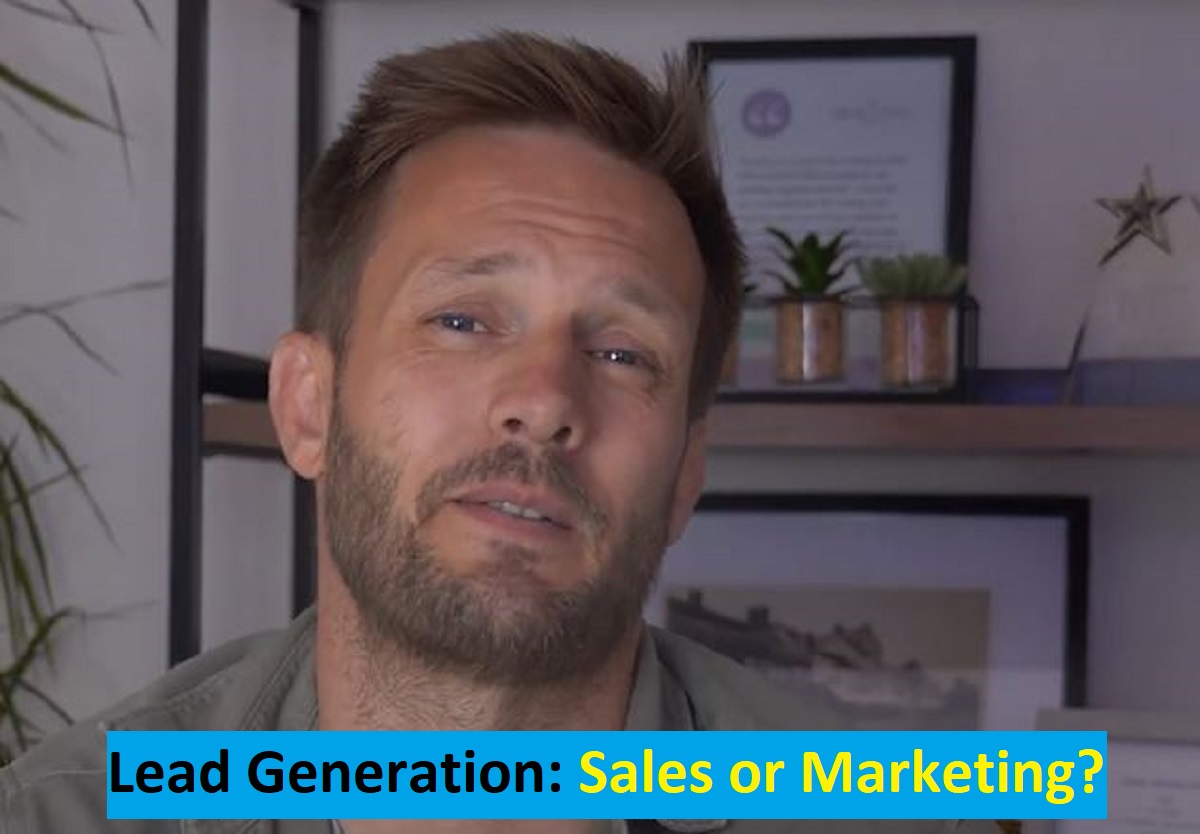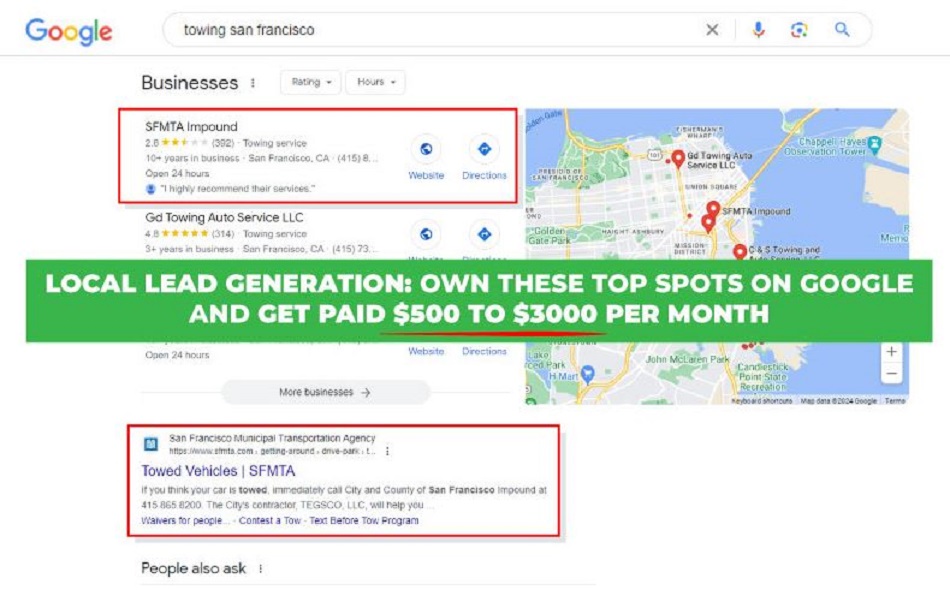Is Lead Generation Sales Or Marketing? | Distinguishing Roles & How To Align For Success

Lead generation is marketing. Although sales plays a role in the process, no leads would be generated without the efforts of a marketing strategy. Marketing initiates lead generation by creating and promoting materials like a website, PPC advertisements, or social media page. These attract a relevant audience who would be interested in the offered product or service. This is why 91% of marketers say lead generation is their top priority, according to Ruler Analytics.
When someone interacts with your marketing efforts, they become a lead. Marketing and sales then work together to nurture those leads and move them closer to becoming customers. When the lead is ready, you pitch the product and maintain the customer relationship. As such, marketing handles the top of funnel aspects of lead generation and sales handles the bottom funnel aspects. However, each business is unique, so it’s not as simple as saying marketing or sales is fully responsible for lead generation.
I’ve been doing lead generation for over a decade already, handling both marketing and sales aspects of the lead generation process. In this article, I break down how both marketing and sales contribute to a successful lead generation strategy. I discuss how you can use CRM tools like Salesforce to improve coordination on lead gen efforts and optimize results.
What Is the Role of Marketing in Lead Generation?
The role of marketing in lead generation is to attract a relevant audience. You attract potential customers using an array of inbound and outbound marketing strategies.
Inbound marketing puts your business where potential customers are already looking. It draws people in to look further into what you offer. Common inbound marketing strategies for lead generation include:
- Search engine optimization (SEO) - Enhancing your organic visibility in search engines like Google, Bing, and Amazon for relevant keywords.
- Search ads - Bidding against other advertisers to show up for target keywords relevant to a product or service and paying when the ad is clicked on. Google Ads, Microsoft Ads, and Amazon Ads are search ad platforms.
- Social media marketing - Creating and sharing organic content on social media platforms like Facebook, Instagram, TikTok, and Pinterest to build brand awareness.
- Content marketing - Publishing content like articles, YouTube videos, short form videos for social media, and podcasts to showcase expertise in a niche and provide value to potential customers.
Outbound marketing interrupts the activity a potential customer is doing to present a message. It pushes your offer in front of the audience’s eyes. Common outbound marketing strategies for lead generation include:
- Cold calling - Contacting people who have shown no previous interest by phone call and informing them of a product or service to determine interest.
- Cold emailing - Contacting people who have shown no previous interest by email and presenting an offer.
- Display ads - Advertisements that are incorporated alongside other content a user is consuming online, such as a banner ad embedded into blog post content.
- Social media ads - Advertisements that are intertwined with social media content, like Facebook Ads, Instagram Ads, and TikTok Ads.
- Direct mail - Sending physical pieces of mail like brochures, postcards, and letters to potential customers home or workplace.
Once someone shows interest in an offer by engaging with marketing efforts, they become a marketing qualified lead (MQL). This is assessed through actions like digital downloads, signing up for a webinar, or repeatedly visiting your website.
The role of marketing typically does not end when someone becomes an MQL. Oftentimes, leads require further nurturing to become sales qualified leads (SQLs). During this transitional phase, leads often go through a lead scoring process, whereby the leads are rated on their likelihood of making a purchase.
What Is the Role of Sales in Lead Generation?
The role of sales in lead generation is to close leads. Someone becomes an SQL when they show real interest in your business and is likely ready to buy soon. The primary responsibilities in sales include:
- Relationship building - Engage with qualified leads through more personalized direct contact to better understand how the offer fits their needs.
- Needs assessment - Conduct consultations, demonstrations, or needs analysis sessions to determine specific pain points of the lead.
- Solution presentation - Use the prospect’s information to pitch tailored solutions. Outline which of your products or services best fulfill the needs of the prospect.
- Objection handling - Address concerns by responding with additional information that overcomes doubts and moves them closer to the point of sale.
- Sales closing - Convert the lead into a customer. Finalize the sales terms and process the transaction or sign a contract.
- Relationship maintenance and follow up - Maintain contact with the customer after the initial sale to ensure satisfaction with the product. A satisfied customer is more likely to refer new prospects to your business and repeat purchases. There is a 27% chance that a customer who has purchased once will purchase again, according to Smile.io. It’s good to offer a range of complementary products so you can do upselling and cross-selling to optimize profit potential.
How to Manage Marketing and Sales for Successful Lead Generation?
- Establish goals - Set clear lead generation goals for yourself, like the number of leads or lead conversion rate to aim for.
- Define lead qualification criteria - Decide what makes a lead a Marketing Qualified Lead (MQL) or Sales Qualified Lead (SQL) so you can focus on the best prospects.
- Use integrated CRM systems - Use CRM tools like Salesforce, HubSpot, or Zoho CRM to track your sales funnel progress and keep organized with your lead data.
- Monitor your marketing and sales - Regularly review how your lead generation efforts are doing. Check if your leads are good and adjust your strategies to improve results over time.
- Track important metrics - Keep an eye on numbers to make sure you’re meeting your lead generation goals and to make smarter decisions.
What Happens to Lead Generation When Marketing and Sales Aren’t Aligned?
Disappointing results happen to lead generation when your marketing and sales efforts aren’t aligned. When you’re handling everything yourself, it’s easy to feel stuck between attracting the right leads and actually converting them. You end up questioning whether your marketing is reaching the right audience or if your sales process needs improvement. It creates internal pressure and second-guessing about where things are falling short.
One Reddit user says that they noticed that most marketing strategies don’t focus on revenue. It’s all about brand awareness or content marketing. So one thing you have to remember is that your marketing strategy should also consider sales.
However, expecting immediate revenue from marketing is unrealistic. It’s important to give yourself realistic timelines and align your strategy with what you can actually manage. That way, your lead gen process becomes more focused, less frustrating, and grounded in real expectations.
What Are the Top Lead Generation Metrics to Track?
The top lead generation metrics to track include:
- Return on investment
- Conversion rate
- Cost per lead
- Lead quality
- Number of leads
Is Remote Closing Effective at Generating Sales?
Yes, remote closing is effective at generating sales. A study by Winning By Design found that remote selling techniques reach a win rate of 28.5% for $100,000 deals with just 12 meetings. The study found that remote selling strategies can reach a win rate of up to 47.6% when optimized effectively.
Local lead generation is an online business model that entails setting up websites to attract leads for local business owners and selling the leads to real business owners ready to expand. The business model includes both marketing and sales aspects. The marketing aspect is generating leads through SEO and the sales aspect is selling the leads to a business owner.
Conclusion: Is Lead Generation a Good Job?
Yes, lead generation is a good job. Every business needs lead generation so there is high demand for lead generation services. Many businesses struggle to successfully do lead generation themselves, so they outsource the work to experts in the field. In fact, 68% of businesses report that lead generation is their biggest challenge, according to Exploding Topics. Furthermore, selling leads to businesses is highly profitable. The average cost of a lead across all industries is $198, according to Expandi. As such, lead generators can generate huge profits by selling leads to businesses.
We teach our students how to use SEO to generate leads and sell them to small business owners for $500 - $2,500 per month. Many service business owners use our program to scale their business and reach new customers as well.

If you want to learn the latest strategies for effectively generating high quality leads and closing remote sales, join our local lead generation program and community of over 7K students.

Follow Me
Ippei Kanehara
Founder/CEO
$52K per month providing lead generation services to small businesses
Ippei.com is for digital hustlers, industry leaders and online business owners.
His #1 online business recommendation in 2024, is to build your own lead generation business.
